|
Printables |
PowerPoints |
Online exercises |
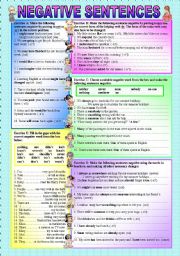
|
�NEGATIVE SENTENCES� - ((elementary/intermediate)) - Teach students �when & how� to form negative sentences - ((5 Exercises & 60 Sentences to complete)) - ((B&W VERSION INCLUDED))
This worksheet focuses teaching students how to form Negative Sentences with 5 exercises and 60 sentences to complete. The exercises included are as follows: **((1))**Exercise A: Make sentences negative by putting in �not� or �-n�t� in the correct position **((2))** Exercise B: Make the sentences negative by putting in �not� and the correct form ...
Level: elementary
Age: 6-17
Type: worksheet
Downloads: 338
|
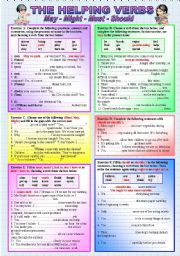
|
�HELPING VERBS/MODALS� - MAY - MIGHT - MUST - SHOULD - (( 6 Exercises & 58 Exercises to complete )) - elementary/intermediate - (( B&W VERSION INCLUDED ))
This worksheet focuses on the Helping Verbs MAY - MIGHT - MUST - SHOULD. There are 6 exercises with 58 sentences for your students to complete. The worksheet includes the following tasks:
1) Exercise A: Complete the following questions, answers and statements, using the pronoun or name in the brackets, and choosing a verb from the box.
2) Exerc...
Level: elementary
Age: 7-17
Type: worksheet
Downloads: 477
|
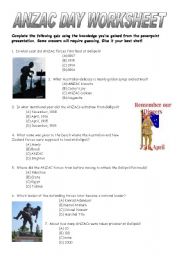
|
ANZAC Day Worksheet - Key Included
This worksheet focuses on the Anzacs (Australian and New Zealand Soldiers) whom fought in World War I. This worksheet is accompanied by a Powerpoint Presentation which is needed in order to answer the questions. So be sure to download it, or else it will not make sense. The answers to this worksheet are also included. Hope you enjoy it. Cheers!
Level: intermediate
Age: 10-17
Type: worksheet
Downloads: 29
|
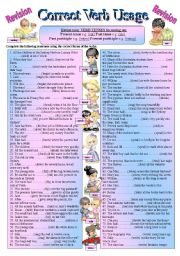
|
"Correct Verb Usage" - Revision of present, past, past participle, present participle tenses - (( 75 exercises to complete )) - elementary/intermediate - (( B&W VERSION INCLUDED ))
This worksheet was developed to quiz the students� knowledge on their verb tenses. The verbs this worksheet focusses on are Present tense e.g. (eat) Past tense e.g. (ate) Past participle e.g. (eaten) Present participle e.g. (eating. There are 75 exercises for your students to complete. The Black & White version is also included. Hope you find it us...
Level: elementary
Age: 7-17
Type: worksheet
Downloads: 307
|
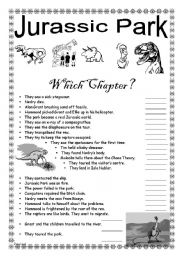
|
""Jurasic Park"" - (( 6 pages )) - elementary/intermediate - black & white - editable
This unit focusses on teaching english Language through "Jurasic Park". It focusses on: comprehension, comparatives, superlatives, perpositions, cloze activities, completing sentences with appropriate preposition, punctuation. It is alos editable. Hope you find it useful. Cheers.
Level: elementary
Age: 7-17
Type: worksheet
Downloads: 24
|
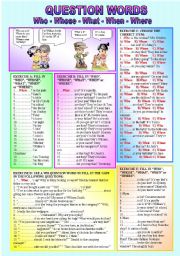
|
�WH - QUESTION WORDS� - Who-Whose-What-When-Where-(( 5 Exercises / 85 Sentences to complete )) - Elementary/Intermediate - (( B&W VERSION INCLUDED ))
This worksheet focuses on using the WH-Question Words - Who, Whose, What, When, Where. There are 5 exercises with 85 sentences for your students to complete. The following tasks are included in this worksheet: Exercises A and B are: FILL IN �WHO�, �WHOSE�, �WHAT�, �WHEN� or �WHERE�, Exercise C is: Choose the Correct Item, Exercise D is: Use a WH-Qu...
Level: elementary
Age: 6-17
Type: worksheet
Downloads: 3247
|
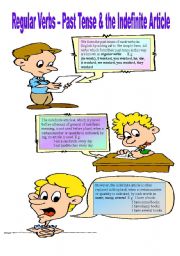
|
"Regular Past Tense Verbs & The Indefinite Article (a, an)" - elementary - (( 3 pages )) - B&W copy also included
This worksheet focusses on how and when to form "regular past tense" verbs and the "indefinite article" (a, an). There are exercises that complement the definitions and explanations for your students to complete. Black & White copy also included. Hope you find it useful. Cheers.
Level: elementary
Age: 5-17
Type: worksheet
Downloads: 37
|

|
The Human Body - Body Parts - (( 4 pages )) - elementary - Editable
These worksheets are designed to introduce learners to some key language regarding health and the body. Such language is used in
Science, Health and Physical Education. It is also used to communicate information about health and illness. Includes in this unit are nouns, verbs, adjectives, functions such as: identifying body parts, describing peopl...
Level: elementary
Age: 3-17
Type: worksheet
Downloads: 23
|
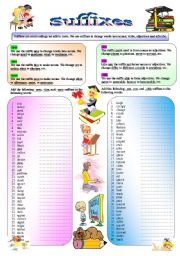
|
"SUFFIXES" - When, Why & How to use (( -ness, -tion, -ance, -ant, -ent, -able )) - (( definitions & 80 suffix exercises )) - WITH ANSWERS - elementary/intermediate - (( B&W VERSION INCLUDED ))
Suffixes are word endings we add to roots. We use suffixes to change words into nouns, verbs, adjectives and adverbs. This worksheet focusses on teaching student "when, why & how" to use the (( -ness, -tion, -ance, -ant, -ent, -able )) suffixes. The answers and black & white version are also included. Hope you find it useful. Cheers.
Level: elementary
Age: 6-17
Type: worksheet
Downloads: 458
|
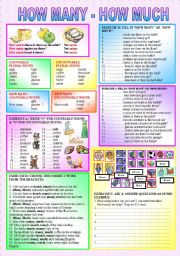
|
�NOUNS�- Countable or Uncountable? - HOW MUCH is used with singular uncountable nouns & HOW MANY is used with plural countable nouns - ((5 exercises & 70 sentences to complete)) - elementary/intermediate - ((B&W VERSION INCLUDED))
This worksheet focuses on using HOW MUCH & HOW MANY with countable & uncountable nouns. The adjective MUCH is used with nouns that are almost always singular & uncountable and MANY is used only with plural countable nouns. In this worksheet there are 5 exercises with over 70 sentences to complete. These are the following tasks: Exercise A: Write �C...
Level: elementary
Age: 7-17
Type: worksheet
Downloads: 2279
|
|
|
|
|